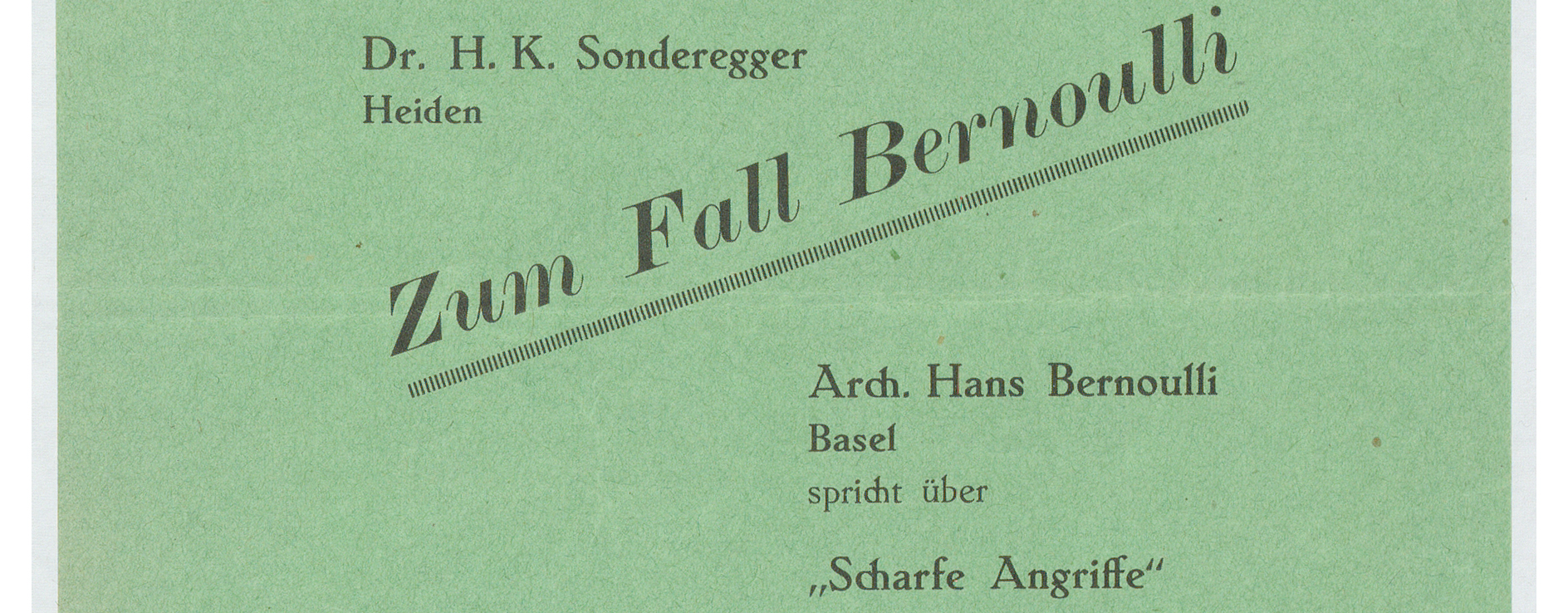From the 2nd of February to the 9th of March 1952, the travelling exhibition “Frank Lloyd Wright – Sixty Years of Living Architecture” made a guest appearance at the Zurich Kunsthaus. The reportage by Comet Photo AG (Zurich) immortalises in eighteen shots the obvious joy of discovery that the huge, almost overwhelming architectural models triggered in the public. Today’s viewers of this historical photo series will not fail to notice the contrast between the avant-garde appearance of Wright’s buildings and the out-of-fashion clothing of the museum visitors. However, if one takes clothing seriously as a cultural medium – and not as an anecdotal addition to the “actual” image content – it is precisely fashion that offers itself here as a common denominator between architecture, photography or photojournalism and personal image cultivation. The relationship between modernism, which from the beginning aimed at a comprehensive reform of life, even a permanent revolution along the lines of the technical-scientific innovation process, and fashion has always been fraught with tension and marked by contradictions. Such image sources as those of the Wright exhibition in Zurich in 1952 are irreplaceable for examining the history of architectural reception.
Architecture
225 years Louvre
The dream of a public art museum had already been cherished by several ministers of the ancien régime a few decades before the French Revolution as the Musée du Louvre in Paris was inaugurated on 10 August 1793 at the height of the revolution. Andrew McClellan writes:
Nautical Ex-Voto
During his stay in Copenhagen in September 1958, the Comet photographer Hans Gerber took pictures of the famous Grundtvigskirche and in its interior with a model ship hanging from the ceiling.
The end of a notorious polluter
Thirty years ago, on 28 January 1988, the tower chimney built in 1964/65 for the heating centre of ETH Zurich at Hönggerberg was blown up in a spectacular operation. Previously, a strong eccentricity had been measured in the 80-metre high concrete chimney and visible damage had been detected, which led to the decision to demolish. The new, lower chimney system with three steel chimneys
Gneiss work!
Felspar, quartz and mica – the main mineral components that make up granite and another type of rock: gneiss. Even though it was used to construct some of Switzerland’s famous buildings, gneiss is relatively unknown compared to granite or marble.
The opening of the new Metropolitan Opera in New York 50 years ago
50 years ago, on 16 September 1966, the new Metropolitan Opera opened in New York City. The building on the Upper West Side of Manhattan is part of the Lincoln Center for the Performing Arts. The non-profit organization promoting music, dance and
Freethinker dismissed – Hans Bernoulli on his 140th birthday
A nasty Christmas surprise lurked in the letter box of Hans Bernoulli, an adjunct professor of urban design at ETH Zurich, on 24 December 1938. The President of the Swiss School Board had written to inform him that his lectureship was to end with the conclusion of the winter
Colourful tile flooring: stoneware or cement?
Every Gründerzeit building enthusiast will be familiar with them: monochrome or multi-coloured tile floors adorned with ornaments or geometric patterns, smooth or with a pressed-on mosaic structure.
The “Frauenbad” in Zurich by Tadashi Kawamata
Tadashi Kawamata is a Japanese artist who is rather well known in Switzerland. Since the 1980s, he has been realizing more or less ephemeral path-like or hut-like wooden constructions in urban areas all over the world. Over the course of time, Kawamata realised a series of bath houses in Switzerland, starting with the Frauenbad in Zurich in 1993.
Ermordung eines Privatdozenten – Zum 25. Todestag von Hermann Burger (1942-1989)
Wolfram Schöllkopf, Privatdozent für Glaziologie und deutsche Literatur an der Eidgenössischen Technischen Universität, flieht aus der Sitzung der Freifächerfakultät, der Abteilung 13 für Geistes- und Militärwissenschaften.









